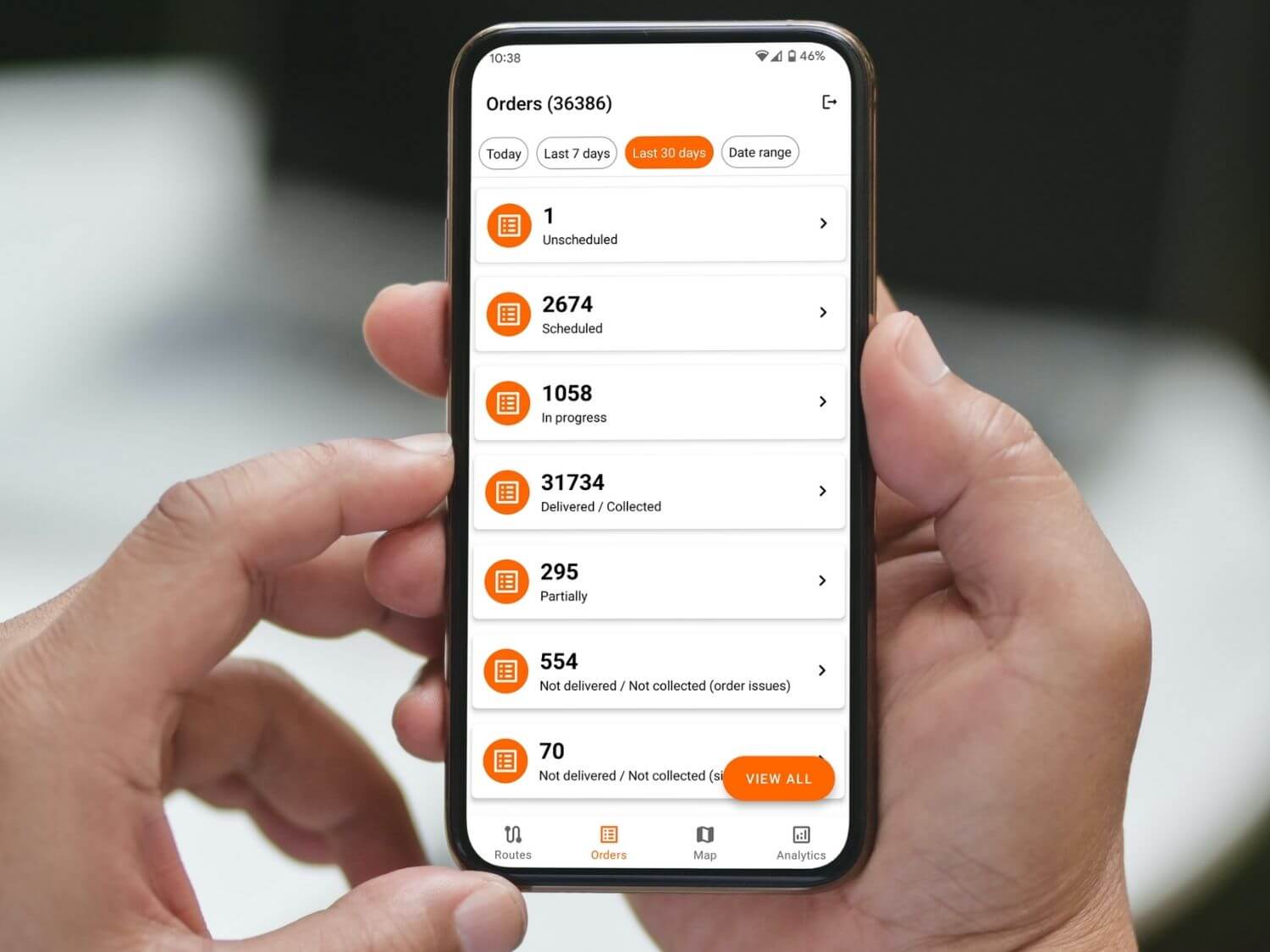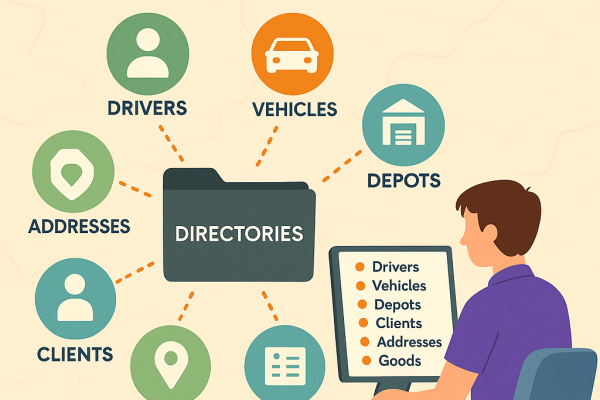5 Tips to Overcome Truck Driver Shortage [2023 Edition]

by
Yulia Miashkova
October 01, 2022
Truck driver shortage is an age-old problem in the logistics and transportation industry.
Together with ever-rising fuel costs and digital transformation, it constitutes the biggest challenges delivery operations are dealing with.
One would think that the healing of global supply chains post-pandemic could also mean the healing of the driver shortage problem. The reality remains as grim as ever.
According to a new survey by IRU - the world road transport organization - the global shortage of truck drivers keeps exacerbating.
Higher wages don't seem to have had much effect on this; and the demographic crisis doesn't make it easier to close the gap between young people and old, much less tech-savvy drivers.
What can be done about the truck driver shortage problem in 2023? How can logistics managers navigate this issue without sacrificing efficiency? This guide has all the answers.
1. Build flexible workflows
No matter how well you treat your drivers, there's always a chance of being impacted by driver shortages. The best thing you can do as a business owner or logistics manager is to build workflows that are flexible and not dependent on one specific driver.
Say, you have 5 full-time drivers on your team and you plan all deliveries and collections 2 days in advance so that all drivers have a clear schedule.
When one of the drivers becomes unavailable for the day, you need to quickly re-plan, re-optimize, re-distribute, and then re-dispatch your delivery routes considering you now have 4 people to do the job.
To not fail your customers' expectations and deliver on time agreed with them, you also need a way to notify them of any changes to the plan, e.g. through instant SMS and email delivery notifications.
How long it takes for you to plan routes, optimize truck space, distribute the load among your drivers, and dispatch all jobs is up to you.
With automated workflows and powerful algorithms comes greater flexibility.
Pro tip!
By moving away from manual route planning, you can reduce your routing & optimization time to minutes and dispatch instantly whenever you've updated routes.
2. Speed up onboarding
A severe driver shortage is often accompanied by a high driver turnover. It's a fact of the trucking industry that because truck drivers quit their jobs too easily, a chronic driver shortage is impossible to avoid.
When you have a high turnover of staff, the best you can do - except create conditions for them to feel rewarded and stay loyal to the workplace - is ensure quick and clear onboarding of new staff.
Truck driver onboarding is something of an issue because of the age gap between young and old drivers.
Digitalization and flexibility is impossible without new tech and tools, and not all drivers are ready to embrace them. Your best bet in this situation is to go for easy-to-learn tools and create a system of onboarding that takes the absolute minimum time.
This can be done by either training truck drivers to teach each other or creating materials (print, video, etc.) to use on their own terms and learn the processes by themselves.

Pro tip!
Go for all-in-one tools to cut the onboarding time - a driver mobile app is all that your team needs for navigation, communication, barcode scanning, and Proof of Delivery.
3. Ensure driver safety
No driver wants to work in unsafe conditions. As a matter of fact, no employee wants to risk their health and safety while in the workplace.
The problem is that driving a commercial vehicle will always be dangerous because of unpredictable traffic and weather, road conditions, speeding, and any other unsafe behaviors of other drivers.
One thing you can do, however, is look after the trucks and make sure your drivers always have the necessary protective equipment with them. This can be done by means of a truck driver safety checklist, either paper or digital on their mobile phones.
Another thing you can do about your driver's safety is enforce daily breaks.
If your truckers work more than 6 hours per day, it's good practice to introduce a 1-hour rest time in the middle of the work day.
Especially if your field staff carries out interstate delivery services and goes on multi-day routes, having an hour every work day to get some rest and recharge is crucial to minimizing drowsiness and unsafe driving behavior.
Pro tip!
Introduce vehicle check routines and have your drivers check on the trucks before and after each route - this can be done through the same driver app they use for navigation and load confirmation.
4. Reward efficiency
To be a good manager means to see your staff and recognize their input. Truck drivers are no exception, and one of the key reasons for high driver turnover and subsequent truck driver shortage is being treated unfairly.
Driver performance evaluation is a time-consuming task. While it's essential to look at your staff's performance over long periods of time to see patterns and identify areas for improvement, nothing beats real-time analytics.
Being able to see the exact location of your drivers at any point during the day is what powers vehicle live tracking - both for dispatchers and for customers at home.
GPS tracking is also responsible for daily analytics like planned vs actual distance traveled and time spent en route. Thanks to delivery management systems that offer manager apps, you can see your drivers' daily performance by tapping on your mobile screen.

At the end of each month, you can look at each driver's performance and compare their rates of Delivery In Full, On Time (DIFOT). Then you can reward your best performers based on reliable data.
Pro tip!
If you collect customer feedback through delivery notifications, you can compare your driver's average monthly ratings and reward best-rated drivers as well.
5. Hire contract drivers
When all is said and done, truck companies need to deal with the driver shortage on a daily basis. With all the right measures put in place, you still might end up short on staff when you need extra people the most.
One way out of this is to hire contract drivers. You can't keep a staff of 15% more full-time drivers in case something happens to some truckers. Working with contract drivers is how you keep some people on retainer for when you need them.
Part-time drivers can be students, retired people, or anyone who will take an extra gig when they can get it.
If you have an easy onboarding system and simple tools like a driver app, bringing new people in won't be a problem.
Everything ties in together because flexible processes is also a good prerequisite to start working with contractors. If you can easily adjust your schedules and dispatch in seconds, new staff is never an issue.
With real-time analytics and proper performance evaluation through shipping reports, you can see if recent hires are a good fit right away. Then you can engage your best performers when you need them.
Pro tip!
Go for delivery software that prices per number of orders and allows unlimited drivers in the system - this is how you can bring on as many contractors as you need without inflating your costs.
Recap
Truck driver shortage is a very real problem in 2023. From what we can see, it will remain this way for some time, and logistics operations need to be prepared for understaffing and disruptions.
The good news is that there are things you can do to minimize your risks as a business dealing with driver shortages. From flexible workflows to safety and rewards - use the tips from this article to navigate the storm and lay the groundwork for smooth sailing.
About The Author
Yulia Miashkova
Growth marketing manager with a background in public relations, SEO, social listening, and Account-Based Marketing.







